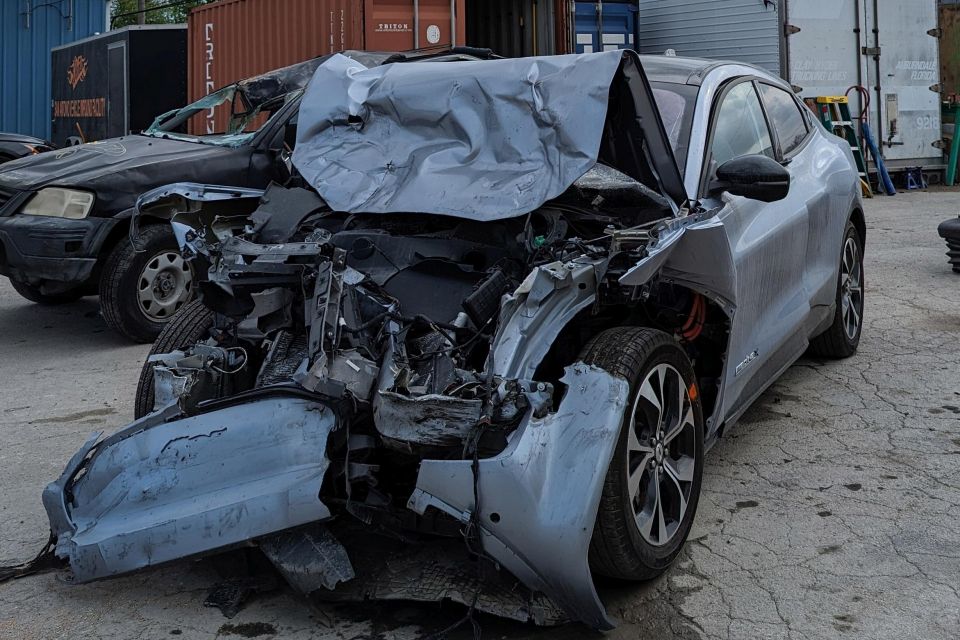New figures showing Australia’s road toll reached a 15-year high in the 12 months to June 2025 is more evidence that the National Road Safety Strategy has failed, according to the country’s peak motoring body.
The AAA’s quarterly Benchmarking the Progress of the National Road Safety Strategy (2021-30) report shows that 1329 people have died on Australian roads in the year to June 30, and that no state or territory is on track to meet its target of halving fatalities by 2030.
In fact, rather than reducing the road toll by 50 per cent, the strategy agreed to by all Australian governments in 2021 led to a 21.1 per cent increase in road fatalities over the following four years, with road deaths up 3.3 per cent in the year to June 2025, and at their highest level for any year-to-June period since 2010.
CarExpert can save you thousands on a new car. Click here to get a great deal.

“Our National Road Safety Strategy is clearly not working as planned and governments cannot expect to get better results by pursuing the same failed approach,” said Michael Bradley, the managing director of the Australian Automobile Association (AAA), which represents the state-based motoring clubs and their 9.5 million members.
At a time when many Australian states and territories are raking in record revenue from speed camera fines following routine increases in penalties, the AAA’s most recent Benchmarking Report shows almost all states and territories posted an increase in road deaths in the past 12 months (except for South Australia and the Northern Territory).
It shows there were 192 pedestrian deaths in the year to June – up 15 per cent from 167 in the 12 months to June 2024, when 38 cyclists died (up 11.8 per cent) and fatalities among motorcyclists fell by 5.4 per cent to 264.
The Northern Territory had the highest rate of deaths per 100,000 residents, at 19.1, followed by Tasmania (8.3), Western Australia (6.1), Queensland (5.3), South Australia (4.4) NSW and Victoria (4.2) and the ACT (1.7).
| Jurisdiction | Road deaths in 12 months to June 2024 | Road deaths in 12 months to June 2025 | Change | % change |
|---|---|---|---|---|
| NSW | 339 | 362 | 23 | 6.8% |
| VIC | 287 | 296 | 9 | 3.1% |
| QLD | 295 | 296 | 1 | 0.3% |
| SA | 100 | 84 | -16 | -16.0% |
| WA | 176 | 185 | 9 | 5.1% |
| TAS | 26 | 48 | 22 | 84.6% |
| NT | 56 | 50 | -6 | -10.7% |
| ACT | 8 | 8 | 0 | 0.0% |
| Australia | 1287 | 1329 | 42 | 3.3% |
Source: Bureau of Infrastructure and Transport Research Economics statistics
The AAA’s Benchmarking Report uses Bureau of Infrastructure and Transport Research Economics (BITRE) figures to track the progress of Australian states and territories in meeting their respective targets for reducing road trauma.
The organisation has long called on state and federal governments to publish the various road trauma data they collect, in order to “de-politicise road funding and to enable evidence-based safety interventions”.
In a press release this week, it commended the NSW Government for last weekend releasing the state’s previously secret safety ratings of its road networks that have been assessed using the Australian Road Assessment Program (AusRAP).

The data showed 71 per cent of NSW roads were rated three out of five stars under AusRAP’s road assessment scheme.
This scheme rates roads based on analysis of risk factors such as average daily traffic, speed limit, number of lanes in each direction, lane width, shoulder width, presence or absence of roadside barriers and rumble strips, gradient and curvature, quality of line markings, skid resistance, whether the road is single or dual carriageway, and provisions for pedestrians, cyclists, and motorcyclists.
“This national leadership is to be congratulated, and it will save lives by improving transparency, accountability, and by ensuring road investment dollars get spent where they are most needed,” said Mr Bradley.
“All Australian states and territories use AusRAP to rate the safety of their networks, and the AAA calls on all jurisdictions to follow the lead of the NSW Government and publish all ratings.
“The Commonwealth has in recent months begun playing a constructive role, by linking its funding of state roads with the provision of road safety crash data, however, it too needs to do more to publish and analyse the valuable information it is now collecting.”

